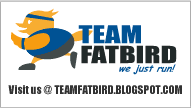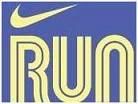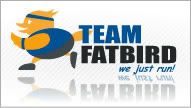The best surfaces for running?
Quite a number of my running friends have been down recently with injuries like ITBS, Runners Knee, etc. I wish them a speedy recovery, and hope they can be running pain-free as soon as possible. I recall my painful episode of ITBS last year, and although I have recovered from that, I am still very careful with my runs and training these days. I found an interesting article from Runners World about A 7-Step Plan For Running Injury-Free which I would like to share:
-- Extracted from Runners World
Too many runners repeatedly make the same mistakes in their training, following the same pattern of training, injury, and recovery, secure in the fact that they can always "fix it" afterwards. Here, taken from Joe Ellis' book Running Injury-Free, are seven ways to avoid injuries from the start
1. Find a Friendly Surface
The best surfaces for running are firm (not mushy or slippery), relatively flat (without camber), smooth (without ruts or holes), and provide some degree of shock absorption. The more angled the surface, the steeper the incline, the harder the surface, the greater are the chances of an injury.
Grassy areas such as golf courses make relatively poor running surfaces. This may surprise some people who choose grass because it's soft. But grassy surfaces are also uneven. And many of us--more than half the population--have some biomechanical abnormality. So running on grass makes the muscles and tendons in your feet and legs work harder and leaves you more susceptible to injury.
Roads are also notoriously poor surfaces, not only because of traffic hazards but because they are canted so that water will run off the center of the road. This slant causes the "upward" foot to pronate more and the "downward" foot to supinate more.
Provided you wear good shock-absorbing shoes, sidewalks tend to make better training surfaces than roads because they are flat. The problem, of course, is that cement surfaces are significantly harder than asphalt or other man-made surfaces.
Here, ranked in order from most desirable to least desirable, are various running surfaces:
1. Soft, smooth cinder track, unbanked
2. Artificially surfaced track, unbanked
3. Soft, smooth dirt trail
4. Flat, smooth grass
6. Hard dirt track or trail
7. Concrete sidewalk or road
8. Banked or cambered surface
9. Hard-sand beach
10. Rough, pot-holed dirt trail or grass
I have always felt that surface 5 is better than 7, and than surfaces 8 and 9 contributed to my ITBS in 2005 - DreamRunner
For the rest of the steps for running injury free, GO HERE!















0 Comments:
Post a Comment
<< Home